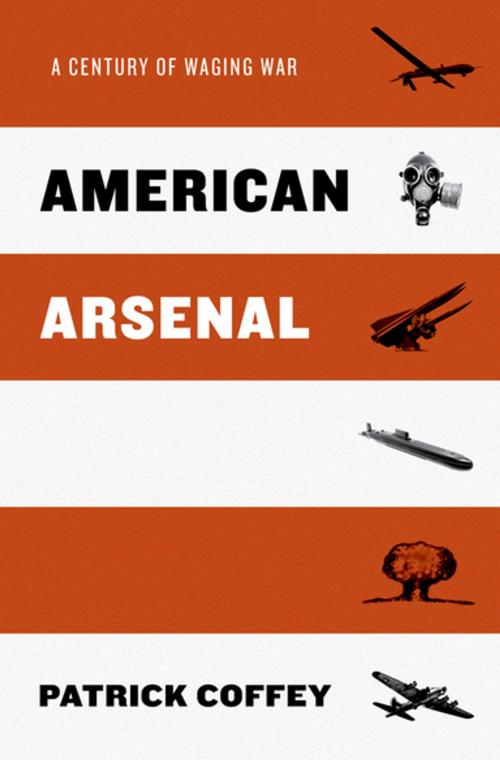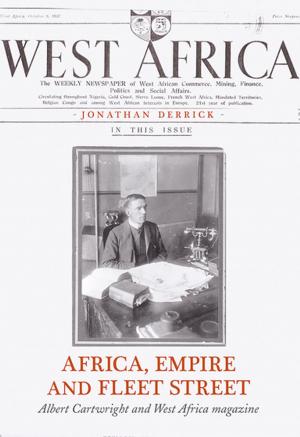American Arsenal
A Century of Waging War
Nonfiction, History, Military, United States, Americas, 20th Century| Author: | Patrick Coffey | ISBN: | 9780199341726 |
| Publisher: | Oxford University Press | Publication: | December 5, 2013 |
| Imprint: | Oxford University Press | Language: | English |
| Author: | Patrick Coffey |
| ISBN: | 9780199341726 |
| Publisher: | Oxford University Press |
| Publication: | December 5, 2013 |
| Imprint: | Oxford University Press |
| Language: | English |
When America declared war on Germany in 1917, the United States had only 200,000 men under arms, a twentieth of the German army's strength, and its planes were no match for the German air force. Less than a century later, the United States today has by far the world's largest military budget and provides over 40% of the world's armaments. In American Arsenal Patrick Coffey examines America's military transformation from an isolationist state to a world superpower. Focusing on fifteen specific developments, Coffey illustrates the unplanned, often haphazard nature of this transformation, which has been driven by political, military, technological, and commercial interests. Beginning with Thomas Edison's work on submarine technology, American Arsenal moves from World War I to the present conflicts in the Middle East, covering topics from chemical weapons, strategic bombing, and the nuclear standoff with the Soviet Union, to "smart" bombs, hand-held anti-aircraft missiles, and the Predator and other drone aircrafts. Coffey traces the story of each advance in weaponry from drawing board to battlefield, and includes fascinating portraits of the men who invented and deployed them -Edward Teller, "the father of the hydrogen bomb", Robert Oppenheimer, head of atomic bomb design at Los Alamos; Curtis LeMay, who led the fire-bombing of Japan; Herman Kahn, nuclear strategist and a model for Stanley Kubrick's Dr. Strangelove; Abraham Karem, inventor of the Predator, and many others. Coffey also examines the increasingly detached nature of modern American warfare- the ultimate goal is to remove soldiers from the battlefield entirely- which limits casualties (211,454 in Vietnam and only 1,231 in the Gulf War) but also lessens the political and psychological costs of going to war. Examining the backstories of every major American weapons development, American Arsenal is essential reading for anyone interested in the continuing evolution of the U.S. defense program.
When America declared war on Germany in 1917, the United States had only 200,000 men under arms, a twentieth of the German army's strength, and its planes were no match for the German air force. Less than a century later, the United States today has by far the world's largest military budget and provides over 40% of the world's armaments. In American Arsenal Patrick Coffey examines America's military transformation from an isolationist state to a world superpower. Focusing on fifteen specific developments, Coffey illustrates the unplanned, often haphazard nature of this transformation, which has been driven by political, military, technological, and commercial interests. Beginning with Thomas Edison's work on submarine technology, American Arsenal moves from World War I to the present conflicts in the Middle East, covering topics from chemical weapons, strategic bombing, and the nuclear standoff with the Soviet Union, to "smart" bombs, hand-held anti-aircraft missiles, and the Predator and other drone aircrafts. Coffey traces the story of each advance in weaponry from drawing board to battlefield, and includes fascinating portraits of the men who invented and deployed them -Edward Teller, "the father of the hydrogen bomb", Robert Oppenheimer, head of atomic bomb design at Los Alamos; Curtis LeMay, who led the fire-bombing of Japan; Herman Kahn, nuclear strategist and a model for Stanley Kubrick's Dr. Strangelove; Abraham Karem, inventor of the Predator, and many others. Coffey also examines the increasingly detached nature of modern American warfare- the ultimate goal is to remove soldiers from the battlefield entirely- which limits casualties (211,454 in Vietnam and only 1,231 in the Gulf War) but also lessens the political and psychological costs of going to war. Examining the backstories of every major American weapons development, American Arsenal is essential reading for anyone interested in the continuing evolution of the U.S. defense program.















